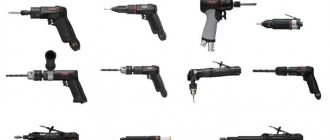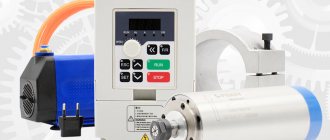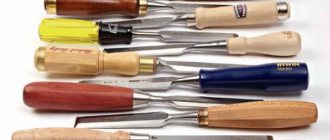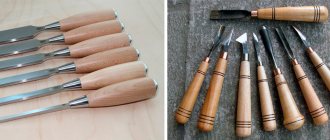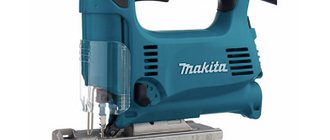Pneumatic tools are devices that operate on compressed air for manual industrial use. Such devices are equipped with motors, which can be piston or rotary, and the air supply to them is provided by a compressor. In this case, the functioning of the compressor comes from the operation of engines using energy sources such as electricity, gasoline and diesel fuel.
In this regard, we can say that the operation of a pneumatic tool necessarily correlates with the use of additional equipment. Previously, such a tool was used exclusively in industrial areas: metal processing, road construction, mechanical engineering, etc. Now the situation has changed radically, since pneumatic tools began to be actively used not only in the construction of private houses, but also in everyday life. For example, you can use it to:
- construction and repair work;
- cutting and drilling;
- installation and dismantling;
- destruction of materials of varying degrees of strength;
- cleaning seams.
Lately, pneumatic tools have become increasingly popular. And all because they are highly economical and quite practical. When choosing a pneumatic tool, the first thing you should do is decide on its technical parameters and, of course, familiarize yourself with the advantages, as well as possible disadvantages.
Equipment necessary for operating pneumatic tools
If to use a power tool you only need electrical wiring of sufficient cross-section connected to a power source, then the pneumatic tool will not work without a set of equipment - a compressor, air preparation equipment and a pneumatic line.
On average, a pneumatic tool consumes about 300-400 liters of air per minute; the power of the compressor is determined by the number of units of pneumatic tools that will work simultaneously, and the compressor must produce 30-50% more volume of compressed air than necessary. You can increase the power of the compressor by using a receiver tank where compressed air will accumulate.
Trigger mechanism: not only machine guns fire single shots and bursts.
There are the most common options for how the tool trigger works:
Pressure shooting - hold the trigger and hit the tip of the gun where you want to drive a nail.
Single mode - one pull of the trigger and the gun fires one nail.
Pinch and release (automatic) - an industrial version that is very trigger sensitive and can fire several nails at once. These are usually upholstery staplers.
Types of pneumatic tools
Depending on its purpose, pneumatic tools can be divided into:
- impact tools
- a jackhammer, a pneumatic punch, various types of guns, a concrete breaker, etc.; - rotary-plate tools
- pneumatic drill, grinder, impact wrench, screwdriver, etc.; - spraying tools
- spray gun, devices for carrying out abrasive blasting work, gun for distributing lubricant.
The service life of a pneumatic tool depends on the conditions of its use; it should be used only for its intended purpose. If a pneumatic tool intended for one type of work is used for other purposes, its service life will be significantly reduced, which is also true if such devices are used too intensively.
Manufacturers offer tools aimed at professional and amateur use. The high popularity of pneumatic tools is explained simply: pneumatic hammer drills, screwdrivers and similar tools significantly surpass in their performance characteristics tools operating on the basis of mechanics or electricity. At the same time, any type of tool has its own pros and cons, which also applies to pneumatic tools.
How to choose pneumatic tools
The main criteria for choosing a pneumatic tool will be its following characteristics:
- power
; - productivity
, including the presence of manual speed control, precision adjustment of the position of the cutting tool and the ability to quickly replace it; - convenience
- weight, location of control elements, permissibility of using a balancer, etc.; - price
- in addition to the cost itself, the terms and conditions of delivery, guarantees and the location of the nearest service station are taken into account.
Examine the body of the pneumatic tool offered by the seller and its magazine part - the fewer plastic inserts, the better; most of the body elements should be made of metal. Evaluate how accurately the body elements fit, make sure there are no holes or cracks on it. It should be noted that when choosing a pneumatic nailing tool, it is better to give preference to models with a magazine for which the fastener is a drum nail or drum nails. Since pneumatic tools constantly require specialized fasteners (a certain staple width or nail length), it would be wise to choose a supplier that provides the required range of high-quality consumables at reasonable prices.
Pros and cons of pneumatic tools
Pros:
- Power
– The jackhammer can strike, releasing 100kJ of energy, making this a truly destructive tool. The high power of pneumatic tools allows you to crush concrete and chop metal. - Wear resistance
– the design features of pneumatic equipment provide it with a long service life. On average, a simple standard pneumatic tool consists of no more than 30 parts that are slightly subject to wear. In total, equipment of this type can withstand about 1 million cycles. The case has protective valves, which prevents moisture, dust and any other contaminants from getting inside. There is no overheating of the tool. - Unpretentiousness
in terms of maintaining operability and maintainability - ease of maintenance, based on one or two operations per month to lubricate parts, and significantly cheaper repair of equipment compared to power tools. - Versatility
of use - pneumatic tools are available for use in any environmental conditions, regardless of the level of humidity, dust and gas concentrations. - Safety
- compressed air as a source of energy for pneumatic equipment allows you to avoid injuries that can be caused by exposure to electricity, since there are no live parts, which also eliminates sparking, and this guarantees safe operation in explosive areas. - Minimum noise level.
- Almost instant readiness
of the pneumatic tool
for work
after air supply.
Minuses:
- High price
- on average, a pneumatic tool costs half as much as a power tool with comparable technical characteristics. - Additional costs
for workplace equipment - the purchase of additional devices in the form of the same compressor is required. - Insufficient maneuverability
- in some situations, when you have to work in limited space, it is problematic to use a pneumatic tool due to the presence of a hose going to the compressor.
Type of nail magazine: drum or rack.
The first thing that catches your eye is the difference in the nail feeding mechanism. Pneumatic nailers come in drum and rack types. The drum gun is loaded with nails on long flexible tapes, twisted into a reel of 150-350 nails; in appearance, the drum most closely resembles the clip of a machine gun from the Second World War. In a rack gun, the loaded cassette of nails does not exceed 100 pieces, and most models are much smaller. There are many opinions on which type of store is better. The drum type is supported by a larger number of nails and increased maneuverability, since they do not have a “tail” in the form of an elongated magazine. Drum gun nails are more standardized and affordable. But the price for drum guns themselves is higher than for rack and pinion guns, and you need to soberly assess the volume of work before buying such a model.
What is a pneumatic tool and how to choose the right one?
A fairly wide variety of tools are used in construction work, and they can have different connection options, ranging from a 220-volt network, charged from a battery or using compressed air. This article will talk about the last option - a pneumatic tool that runs on compressed air.
If we take into account the design features of this tool, then technically they consist of motors, which, in turn, can be either piston or rotary, and compressed air is supplied to them through a compressor. Based on this, we can definitely say that it is impossible to operate this version of the tool without the use of additional equipment, which includes a compressor.
Types of pneumatic tools
Now let's list the types of tools that are most common. Conventionally, the entire variety of such a tool can be divided into:
1.Percussion type instruments
This includes various jackhammers and concrete breakers.
2.Rotary type tools
Pneumatic drill, pneumatic impact wrench and pneumatic grinder.
3.Spraying tools
– pneumatic spray gun, gun for distributing lubricant.
Actually, all of the listed tool options do not differ in functionality from their related power tools, the only difference is in the connection method.
To operate a pneumatic tool, a hose is connected to the fitting located in the handle, through which compressed air is supplied from the compressor. By pressing the trigger, the user can activate the mechanism of the tool.
Purpose of the tool
Let's list some pneumatic tools that are often used in work.
Drills
- used for making holes in various materials. They differ mainly in power and ability to withstand long-term loads, as well as in the number of revolutions per minute.
Screwdrivers
A distinctive feature over the electric version will be the increased power, which definitely has a positive impact on productivity and versatility when performing various tasks with it.
Impact wrench and jack
They are actively used in technical inspection stations or even at home when repairing cars. The cost of such a tool will be influenced by the presence of extensions in additional options, as well as the presence of differences in technical characteristics.
Staplers and nailers
- can be used for driving nails and staples into boards or attaching any material to the surface. This tool is actively used in the production of furniture, where it is often necessary to fasten upholstery.
Jackhammer
- one of the most famous pneumatic tools. It is often used by road workers, greatly facilitating the work of dismantling the road surface.
As an intermediate result, we highlight the main advantages of pneumatic tools:
1.Power - a significant part of such a tool has increased power values.
2. Wear resistance - due to its design and internal components, the service life of pneumatic tools is longer, and the body itself has protective valves that do not allow moisture and dust to get inside the body.
3.Easy maintenance, requiring mainly lubrication of tool components.
4. Safety - the use of compressed air to ensure the operation of the tool allows you to minimize the occurrence of various injuries. As for example, in the case of a power tool, this can be an electric shock, and the absence of live parts eliminates any sparking.
But it is also worth noting some disadvantages:
1. High cost - about half the cost of a power tool.
2. Cost of purchasing additional equipment, for example, a compressor.
3. Limited maneuverability - relevant if the work space is limited. The work process is complicated because the pneumatic tool is connected by a hose to a source of compressed air.
Guns for: roofing, framing, flooring, finishing with pins or staples.
There are four main applications for nail guns:
- roofing guns for soft tiles,
- frame nailers for driving large nails into thick material,
- parquet guns for working with flooring,
- finishing models, light and convenient pins for careful work on furniture, interiors, moldings and pins and staples for delicate work.
It is important to look at the description of the gun before purchasing, since there are different specific features in the work - some finishing guns can be used as light nailers, while others cannot.
How does a lubricator for pneumatic tools work?
This device is a reservoir, the body of which is made of metal, which is put on the inlet part of the pneumatic equipment and fixed to a threaded connection. When installed, the lubricator is placed after the filter, which is necessary to dry the air flow. After the air gets inside, it is enriched with oil particles and goes further into the tool itself.
It is very important that the distance of the hose between the lubricator and the device itself is no more than 10-12 meters: with a longer length, the distribution of oil with air is not as effective, and condensation begins to form on the walls, reducing productivity. If this length is not enough, it is better to use linear type lubricators, which are installed directly in front of the tool.
Modern devices may differ in thread size, construction materials and the volume of the storage tank into which oil is poured before use. In addition, devices can be single-point or multi-point, and the choice of equipment is made taking into account the characteristics of future operation. Among other things, devices are divided into two groups according to type of design:
- Lubricator filters, which are mounted on the tool itself between its handle and the hose for air flow.
- Air accessories installed on a compressor or flow distribution system.
The operating principle of a pneumatic tool is quite simple; the whole secret is in the compressed air that comes from the compressor through a high-pressure hose to a special engine. The compressor that compresses air can have either an electric, diesel or gasoline engine. It is worth noting an important advantage of how pneumatic tools work - they themselves do not consume electrical energy at all.
The compressor housing consists of a high-quality aluminum alloy, but all its parts are made of hardened structural steel. Thanks to the good processing of the parts and their mobility, the tool itself works very quietly, although sometimes the opposite may seem, but this is due to the type of work itself, and not to the tool. Vibration depends on how well the parts were made and how many gears are in the structure itself. Higher quality and more expensive pneumatic tools work with very little vibration, because there are no gears at all.
As you can see, the operating principle of a pneumatic tool is very simple - it completely depends on the pressurized air, which, according to the type of the tool itself, causes the desired mechanism to operate (the most common of which are impact, rotation or injection).
CHAPTER 4. PNEUMATIC RESCUE TOOLS
The Elbrus set of pneumatic jacks is designed for emergency rescue operations carried out during the liquidation of the consequences of emergency situations. It is used during rescue operations, for releasing people injured in accidents, clearing rubble during earth-shakes, repairing pipelines, lifting building structures, breaking away stone blocks in quarries, repairing heavy equipment and machine tools, hanging railway bridges, opening window and door bars, opening elevator doors, lifting loads under water (filled with water).
Pneumatic jacks provide lift by changing shape by bending both planes. Pneumatic jacks are always ready for use. Pneumatic jacks can be used in closed and limited spaces when the use of rack, hydraulic or screw jacks is not possible.
Pneumatic jacks come in high pressure (working pressure above 1.0 MPa), medium pressure (working pressure from 0.1 to 0.8 MPa) and low pressure (working pressure below 0.1 MPa).
Separately, there are pneumatic plugs of various shapes (working pressure 0.15 MPa) and pneumatic plasters (working pressure 0.15 MPa).
An approximate diagram of a set of pneumatic jacks is shown in Fig. 4.1. The jack is an elastomeric (rubber-cord) element of the cushion type with aramid reinforcement 1, equipped with a metal quick-release connection (nipple). The jacks are connected to the control panel 2 using sleeves 3 with quick-release connections. A control panel equipped with pressure gauges 4 and two control handles 5, for one
temporary work with two jacks. The sleeve 6 of the gearbox 7 is connected to the control panel with a quick-release connection. The gearbox is screwed into the compressed air cylinder 8.
Rice. 4.1. Set of pneumatic jacks “Elbrus”: 1 – pneumatic jacks, 2
– control panel, 3 – sleeves, 4 – pressure gauges, 5 – control handles, 6 – sleeve, 7 – reducer, 8 – cylinder
The cost of the tool and what affects it
Once a specific model has already been selected, employees must choose the most relevant cost that will pay for itself quickly. Need a cheap product? It is better to look for a product with low-quality materials. But you have to be careful. If moisture gets on low-quality metal, it can cause corrosion.
Do you need a brand from a domestic manufacturer? There are many suppliers on the Internet who install their devices at a lower cost than foreign companies.
Also, in simple construction stores it is easy to find a special device that meets the necessary standards.
Lubricators are also called oil sprayers and are designed to supply lubricant from a reservoir to the elements of a pneumatic system using a stream of compressed air. The supplied oil sprayers are of the ejector type. The air flow passing through the lubricator is divided into main and ejection.
The ejecting flow causes a local decrease in pressure due to an increase in the velocity head and the pressure difference between the oil reservoir and the spray chamber. This pressure difference is sufficient for the oil to rise up the vertical tube and then through the throttling channel and the curved tube to enter the spray chamber in the form of drops. In the chamber, the oil is atomized in the air flow and enters the main air flow in the form of oil mist, which enters the pneumatic system.
Currently, it is recommended to use as little lubricant supply to the pneumatic system elements as possible, since in such systems liquid lubricant is released into the atmosphere. The use of lubricators in pneumatic systems is mandatory in cases where the system has already used oil spray devices, when the system uses pneumatic cylinders in steel casings, and when the system requires high speeds of movement of the cylinder rod and large diameter pneumatic cylinders are used.
Operating principle: pneumatic or cordless (gas)
There are two fundamentally different sources of energy for a pistol - pneumatic (air) and gas, powered by the detonation of a portion of gas, like your car. Pneumatic nailers require a compressor (which is a separate study to purchase), hoses, and other accessories. A more expensive option than pneumatics would be gas or cordless versions of the gun, which operate from the detonation of a small portion of gas from a can in the combustion chamber. This is convenient when increased mobility is required. But we must remember that mobility is good, but gas cartridges will cost more than electricity for a compressor; when choosing, you should think about the fact that the cost of a pneumatic tool compressor is more profitable when the tool is used intensively.
Why are you buying a nail gun?
The first and foremost challenge you face when purchasing your first nail gun is the type of job you intend to use it for. There are tools for every type of job you can imagine. The scope of using these tools depends only on you. In the USA and Canada, most residents of two-story houses with a garage and a lawn, which we often see in films, buy this tool for various household needs. Much like how many of us store an electric screwdriver in the garage or trunk. A nail gun will find its use wherever there is wood and nails, from assembling a birdhouse to constructing outbuildings.
How the device works
To understand what a lubricator is and how this device works, you need to decide what this oil supply tank actually is. The body of the product is predominantly made of metal. This reservoir is “put on” the working area of the pneumatic tool, and then adjusted using nozzles with suitable threads.
The equipment itself must be installed after the air filter. Otherwise, nothing happens, or the filter will be damaged. If the additional devices are installed correctly, the supplied raw material will be enriched with air and later receive the required amount of oil. Next, the substance enters the hose itself.
In order not to reduce the quality of the operations performed, it is located at a distance of no more than 10 meters. Otherwise, the composition simply will not be supplied in the required quantity to the tool, which will certainly lead to a decrease in the quality of operations. In addition, it is necessary to ensure that no condensation remains in the hose.
However, there are situations when the hose length is simply not enough. In this case, it is best to purchase special-purpose equipment that is installed directly on the tool itself and increases productivity.
In order to understand what mechanism is needed for a certain type of work, it is better to immediately understand what characteristics must correspond to a particular product. The most common of these are:
- Diameter of the mounted thread.
- The materials from which the tanks were made.
- Tank volume.
In addition, employees immediately determine what type of actions will be performed in the work shop. Based on this knowledge, the type of device used is already determined. It can be single-point or multi-point.
And in addition to this data, you should know what type of structure will be used during the work. A filter dispenser can be purchased. It has the property of being installed at the optimal distance between the hose and the handle.
Often workers do not know that such a lubricator is installed on the compressor. In rare cases, installation will be carried out directly on the air flow distribution mechanism.
Choosing a wrench
When you choose a particular pneumatic tool option, be sure to consider how intense the work will be. In particular, professional-type devices are used for regular, but not long-term work. But cheaper models can be used infrequently - no more than 1-2 times a week.
When choosing, be sure to take into account such an indicator as the maximum diameter of the nut or bolt that your tool can work with. In particular:
- Budget models, working with diameters up to 25 mm, are intended primarily for small tire shops, as well as small, passenger or commercial vehicles;
- The equipment for threading up to 32mm is suitable for medium commercial vehicles;
- Tools for threads up to 50 mm (in particular, heavy-duty types) are used for heavy industry, agricultural machinery and heavy trucks.
Pneumatic impact wrenches have universal applications and come in different types. How they are designed and used correctly was discussed in this material.
